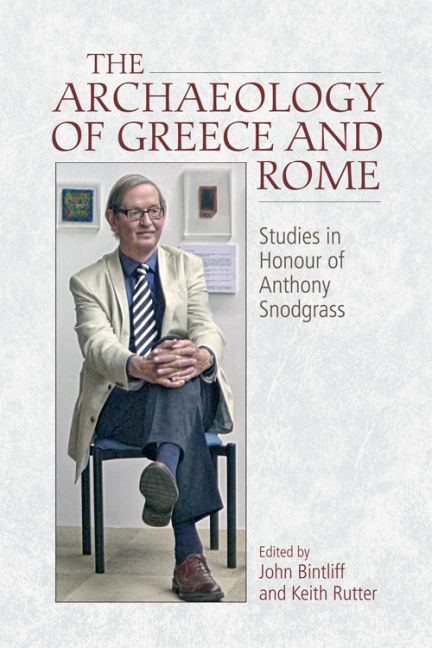Book contents
- Frontmatter
- Contents
- Preface
- List of Contributors
- List of Abbreviations
- Section I Prehistory
- Section II Around Homer
- Section III The Archaic and Classical Greek World
- 7 Potters, Hippeis and Gods at Penteskouphia (Corinth), Seventh to Sixth Centuries bc
- 8 Space, Society, Religion: A Short Retrospective and Prospective Note
- 9 Modelling the Territories of Attic Demes: A Computational Approach
- 10 Hesiod and the Disgraceful Shepherds: Pastoral Politics in a Panhellenic Dichterweihe?
- 11 ‘Is Painting a Representation of Visible Things?’ Conceptual Reality in Greek Art: A Preliminary Sketch
- 12 Coins in a ‘Home Away from Home’: The Case of Sicily
- Section IV The Greeks and their Neighbours
- Section V The Roman and Much Wider World
- Section VI The Scholar in the University and in the Field: Personal Histories
- Index
9 - Modelling the Territories of Attic Demes: A Computational Approach
from Section III The Archaic and Classical Greek World
Published online by Cambridge University Press: 26 May 2017
- Frontmatter
- Contents
- Preface
- List of Contributors
- List of Abbreviations
- Section I Prehistory
- Section II Around Homer
- Section III The Archaic and Classical Greek World
- 7 Potters, Hippeis and Gods at Penteskouphia (Corinth), Seventh to Sixth Centuries bc
- 8 Space, Society, Religion: A Short Retrospective and Prospective Note
- 9 Modelling the Territories of Attic Demes: A Computational Approach
- 10 Hesiod and the Disgraceful Shepherds: Pastoral Politics in a Panhellenic Dichterweihe?
- 11 ‘Is Painting a Representation of Visible Things?’ Conceptual Reality in Greek Art: A Preliminary Sketch
- 12 Coins in a ‘Home Away from Home’: The Case of Sicily
- Section IV The Greeks and their Neighbours
- Section V The Roman and Much Wider World
- Section VI The Scholar in the University and in the Field: Personal Histories
- Index
Summary
The territorial aspect is at once the most basic and the most neglected element of polis organization.
(Snodgrass 2006b: 278)Introduction
The territoriality of Attic demes has been a matter of dispute, but the evidence for the existence of territorial limits now seems overwhelming – regardless of how concretely they were marked on the ground. Some of the deme limits, perhaps contested ones, were fixed precisely by rupestral horoi. The majority of them, however – like most borders separating city-states – consisted of sight lines linking natural features such as summits, ridges and gullies. Locating more deme limits in the future is important for the progress of Attic topography. Deme boundaries are also valuable for assessing the potential agricultural catchment of demes, and for studying the rural economies of Attica at the level of individual demes and larger regions. But since looking for rupestral horoi is not a solution per se, other methods should be considered. In this chapter, I stress the utility of a computational method for modelling the territories of the 139 Cleisthenic demes using geographic information systems (GIS). The limits produced by this model represent approximations which can be used as working hypotheses, in combination with known horoi and other established delimitations, and can also serve as guidelines for future fieldwork and border studies. Most importantly, this model offers the possibility to view Attica as a mosaic of micro-regions and deme territories instead of the usual dots on a map.
It is an honour to offer this short piece to Anthony Snodgrass, a scholar who was among the first to recognise the importance of borders and borderlands in field survey archaeology and who encouraged me to pursue their study.
Attic demes as micro-territories
The development of settlements and territorial modules in Attica
The word demos defines ‘in the first place a certain type of community whose unity is conceived in relation to the territory it occupies’. The meaning of this old word can obviously vary from region to region, but it has a dual significance, geographic and human. When Cleisthenes conducted his reforms in Attica, at the end of the sixth century bc, demes (or, better, proto-demes) had already been in existence for a long time. In Attica, some 200 published ‘sites’ from 1100–500 bc are known, and close to seventy of them, outside Athens, were occupied in the sixth century.
- Type
- Chapter
- Information
- The Archaeology of Greece and RomeStudies In Honour of Anthony Snodgrass, pp. 192 - 222Publisher: Edinburgh University PressPrint publication year: 2016

